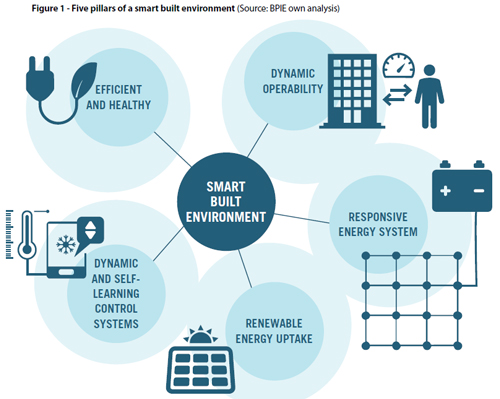Ordet smart är livsfarligt. Det låter alltid rätt men vad som menas med smart är ofta förborgat i vad avsändaren menar med det (men sällan förklarar) och som ännu oftare förstås på ett annat sätt av lyssnaren. Och man vill ju inte framstå som korkad genom att fråga!
Buildings Performance Institute Europé (BPIE) förklarar åtminstone vilka delar de tycker skall ingå i det smarta bygget, se bild nedan. Och de kallar dessutom sin skiss för “smart-förberedd”. Så här har man en chans att hänga med.
* smart-ready built environment requires efficient and healthy buildings.
* dynamic operability providing a better indoor environmental quality for the occupants. They should be able to configure the building’s technical management system
* energy-system-responsive buildings, ready to answer the needs of the electricity, district heating and cooling grids and the broader energy system
* smart-ready built environment enables renewable energy uptake.
* smart built environment needs proper dynamic and self-learning control systems,
Det verkar rätt smart!?

Skrivet av Hans Nilsson, 2017-02-22.
(0) Kommentarer • Permalink
